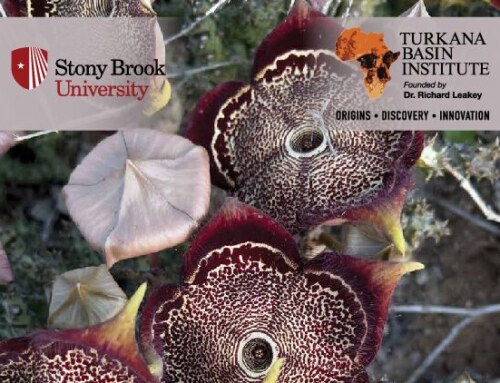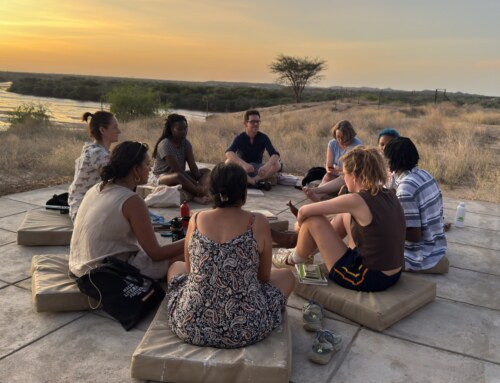Hello! I’m Ian McMahon, a graduate student here at TBI. I graduated from SUNY Potsdam in 2020 with a degree in archaeology, specializing in human evolution and origins.

This week, we started our paleontology module, taught by Dr. Ellen Miller, learning about the MIocene vertebrates of the Turkana Basin. The Miocene lasted from 23.03 to 5.333 million years ago, and saw a massive explosion in biodiversity, especially among apes and monkeys.
We started our week by discussing the history of evolutionary theory, beginning with Lamarck, moving to Alfred Russel Wallace, and finally Charles Darwin. After we gained an understanding of the process of evolution, we learned about what makes a species, and how to differentiate between species. Through the rest of the week, we would put this knowledge to use, as we learned the osteology (bone studies) of modern and Miocene mammals.
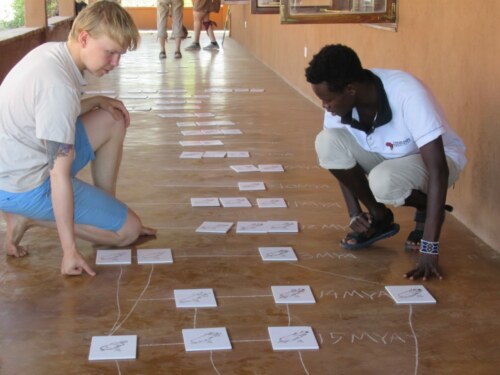
Getting to grips with evolutionary theory.
On Wednesday, we began with a lesson on general osteology and terminology. This included how to tell what side of the body a bone was from, the different anatomical positions and directions, and being able to identify a bone on sight. Then, in the afternoon, we started what would become our new daily activity: bone IDs in the lab. We were paired up, and each group was given a mammal skeleton to identify, each from a different order. My group got a camel skeleton, which was very interesting to analyze, especially comparing it to human osteology.
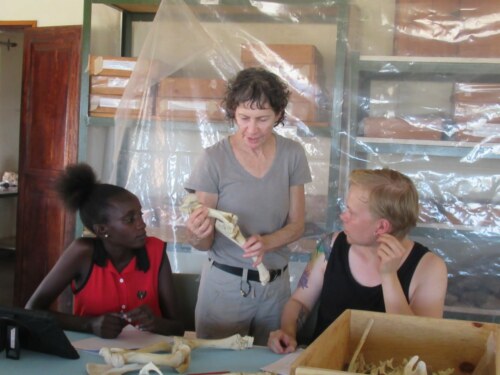
Familiarity with bone morphology is key in paleontology.
On Thursday, we started our day learning about functional morphology, which is the way that an animal’s lifestyle has affected its skeletal structure. We then discussed the various mammals found in the Turkana Basin during the Miocene, such as the Deinotherium (an elephant with a short trunk and downward curving tusks), and ancestral rhinos and giraffes. In the afternoon, we continued our work in the lab, this time analyzing the skeletons we had already identified through the lens of functional morphology, determining what evolutionary processes might have led our specimens to have the forms they do.
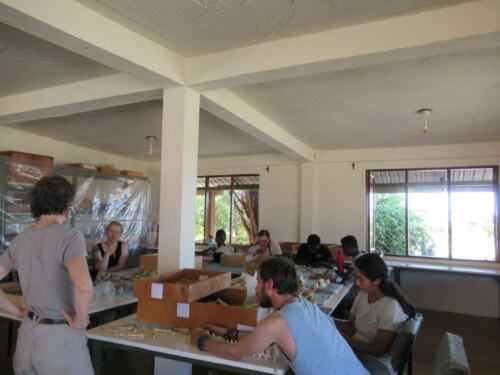
Discussing bone morphology with Dr. Miller.
On Friday, we dove deeper into the evolution of Miocene primates. First, we learned what characteristics can be used to differentiate a primate from other mammals, and then how those characteristics may have evolved. We also discussed the theories of primate evolution, and the pros and cons of each. Later, we learned about the key primate species of the Turkana Basin. In the afternoon, the TBI campus received a visit from the United Nations Industrial Development Organization(UNIDO) group, a team of experts focusing on sustainable livelihoods in this ever-changing environment. After a shared lunch, the group took a tour of the campus, learning about the hydroponic farm and getting a look at some of the rich fossil collections housed at TBI. After the UN group departed, we had a final chance to study the bones in the lab before our osteology quiz the next day.
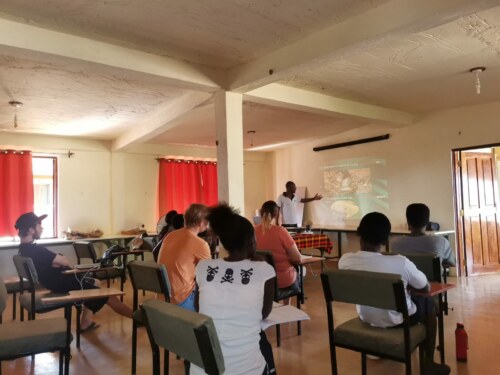
Martin Kirinya teaching the students about collection protocols – especially all of the details that must be captured in the field.
On Saturday morning, we learned about taphonomy, or the study of site formation processes. After that, we received a lecture from Martin Kirinya, the collections manager, about the cataloging and collections processes for TBI, and the importance of maintaining a clear line of records for artifacts and fossils. We also helped wet sieve sediments from the nearby Nakwai site to be analyzed after we return from camping on Wednesday. After lunch, it was time for the osteology quiz. There were 14 stations set up in the lab with a few bones or bone fragments laid out at each station. We had one minute to answer a question about each station, most often identifying the bone and the side of the body it came from.
Now that the week is over, on Sunday we headed to the Eliye Springs beach to relax before our second camping trip to Napudet on Monday.
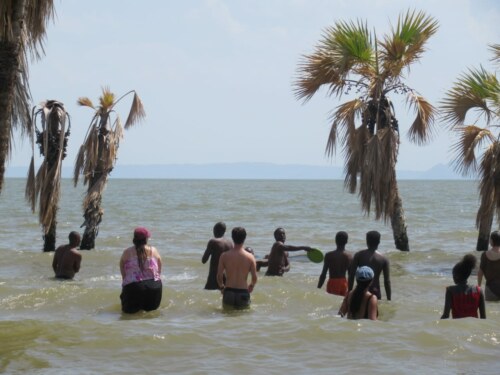
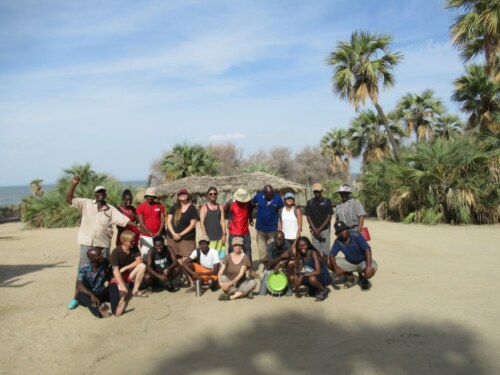
Life’s a beach!

